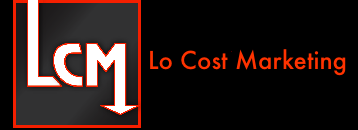One common mistake of inexperienced bloggers is that they get the website layout and design horribly wrong.
This usually happens because the blogger is trying to do everything themselves, instead of paying a professional website designer to do it properly.
The result of this is that countless hours are wasted trapped in a website design learning curve. Curiosity turns in frustration, and then results in anger.
But whether you decide to do it yourself or pay a website designer, there are a few simple ideas that are imperative to making your site easy to read and understand what it is about.
Here are seven underestimated website layout and design tips:
1. Keep the content column of the site narrow, and in proportion to the rest of the site
One very common mistake is to make the website display on the entire width of the readers computer screen. For some monitors that can be 1300 pixels or more.
This usually involves a sidebar on each side of the content, with a content column in the middle that is ultra wide. And quite often the sidebars are littered with advertising and other junk in the hope that someone might possibly click on one of them.
In a word this type of design is "UGLY".
Ideally you should only have one sidebar (either on the left or right of the content), and then have a narrow column for your content. An ideal width is around 500 – 600 pixels.
The reason for a narrow content column is that it is much easier on the eyes to read. It is not natural to have to read text that is the length of a ruler.
Newspapers have narrow columns of text because they are a lot easier to read. The average paperback has narrow pages as well for this reason.
2. Use coloured headings to emphasise what the section of the content is covering
Break the chunks of text up with some clear headings in a consistent colour. Personally I like to use the h3 tag for this, which can be automatically set up in your CSS settings.
This makes the page look a lot brighter and also divides it into sensible sections.
After reading the heading the reader immediately knows what the next few paragraphs are about.
3. Use bullet points or numbers to separate the relevant blocks of content
Again, you want to break your text up into logical sections.
Using bullet points or numbers is a great way of making different points about the subject of the article. The other great thing about bullet points is that it is easy to base an entire article around a list of bullets.
4. Use small paragraphs of text to make it easier to read
I see a lot of content online that has paragraphs that are about 20 lines long. Sentence after sentence are pushed together.
Again this looks horrible, and it also makes it really hard to read. People lose their place on the page, and quite often won't bother reading paragraphs that are too long.
This type of writing never comes up for air. You don't see books, magazines or newspapers with huge paragraphs of text.
Personally I take the opposite extreme and rarely use more than two sentences in a paragraph. This is possibly overdoing it, but the point is that short paragraphs are a lot better than really long ones.
5. Use black text on a white background
Just like newspapers and books, you should be keeping it simple with black text on a white background.
You will find that almost all of the authority bloggers stick to this as well.
Some people like to get colourful and may have blue text on a yellow background, but in my opinion this is a big mistake.
6. Use standard fonts that people are used to and familiar with
As well as using standard colours, you should also use standard fonts.
Fonts such as Arial, Times New Roman, Tahoma and Georgia are extremely popular fonts that people are used to.
If you start using fancy fonts you will find that it will turn people off in most cases. Keep it simple!
7. Use images and video to brighten up the text
And it is also important to be using images and video with your text. A page that is full of text only looks boring and dull.
Magazines use images to great effect, because it makes it look a more interesting. Can you imagine buying a magazine that only had text in it?
It is true that newspapers are mostly text, but we are living in the digital age now and traditional newspapers are a dying breed. People would much rather read the news online than go to the shop to buy the paper.
Take a good look at the really popular sites and blogs online, and study the website layout and design of these sites. You will find that the large majority of these sites use the methods mentioned above.
Image Copyright (c) from 123RF Stock Photos

